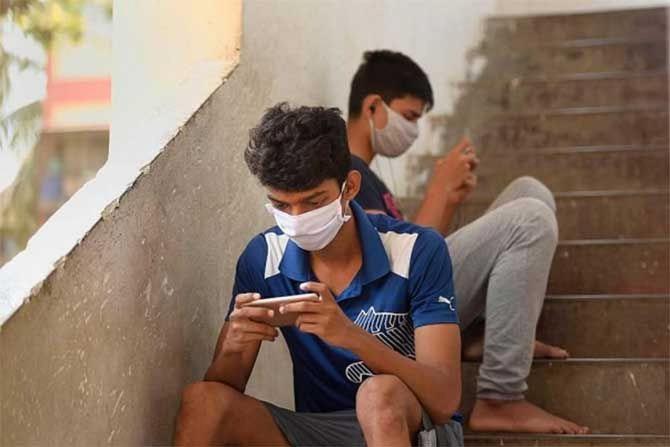A day ahead of the interim Budget, India slashed import duty on spare parts, like battery cover, lens and SIM socket, used in mobile phone manufacturing to 10 per cent, from 15 per cent.

The duty cut is aimed at boosting local production and exports, as well as reducing prices in local markets.
The finance ministry on January 30, notified the cut in duty on all goods for use in manufacture of cellular mobile phones to 10 per cent.
The other components include battery cover, front, middle and back cover of phone, main lens, screw, SIM socket, or other mechanical items.
Telecom Minister Ashwini Vaishnaw in a post on X said the duty rationalisation would strengthen the mobile phone manufacturing ecosystem through this measure.
"Rationalisation of customs duties brings much-needed certainty and clarity for the industry," Vaishnaw said.
GTRI co-founder Ajay Srivastava said the duty cut will have no impact on improving export competitiveness of mobile phones made in India as all inputs, parts, and components used in the making of mobile phones for exports can already be imported at zero duty under various government schemes like SEZ, ddvance authorisation.
Firms like Apple use these schemes.
"The government should watch out if the benefit of duty cuts are passed to domestic mobile phone buyers through price cuts," Srivastava said.
The Indian Cellular and Electronics Association (ICEA) chairman Pankaj Mohindroo said this is a critical policy intervention by the government towards making mobile manufacturing competitive in India.
"Electronics have improved from the 9th position a few years ago to India's 5th largest export in 2024. Mobiles constitute over 52 per cent of electronics exports thanks to the Production-Linked Incentive Scheme.
"This is the first industry to leapfrog out of import substitution to export-led growth within the last 8 years," Mohindroo said.
Nangia Andersen India associate director- indirect tax, Khushbu Trivedi, said, the import duty on components like battery covers, main lenses, back covers, and other plastic and metal mechanical items has been decreased to 10 per cent with corresponding inputs/ parts used in manufacturing of a few components brought down to nil duty rate in order to promote local manufacturing.
Additionally, duties on display assembly parts for LCD panels have been reduced to 10 per cent for better alignment.
"The government has in effect slashed the import duty on mobile components with a clear intention of boosting the indigenous assembly of mobile phones.
"This positive move is poised to facilitate level playing field to Indian companies by enhancing their competitiveness at the global stage, ultimately contributing to the growth of India's export sector," Trivedi added.
SW India practice leader - indirect tax Ankur Gupta said in pursuit of becoming the world's fourth-largest cellular mobile phone exporter, India is strategically working towards curbing the import of mobile phone components as finished products.
"The government is redirecting its focus towards importing raw materials to stimulate domestic manufacturing of these crucial components.
"The implementation of the Production Linked Incentive (PLI) scheme is a pivotal step taken by the government to incentivize manufacturers within the mobile phone industry, encouraging not only the assembly of complete devices but also the production of individual parts," Gupta said.











 © 2025
© 2025